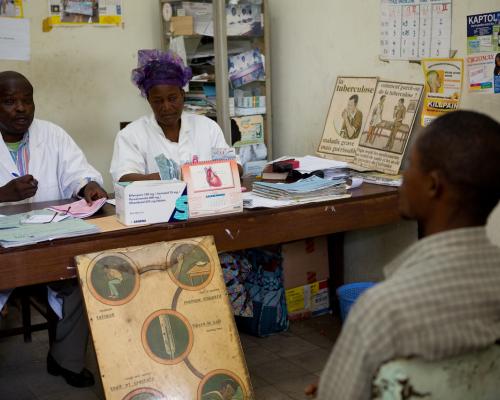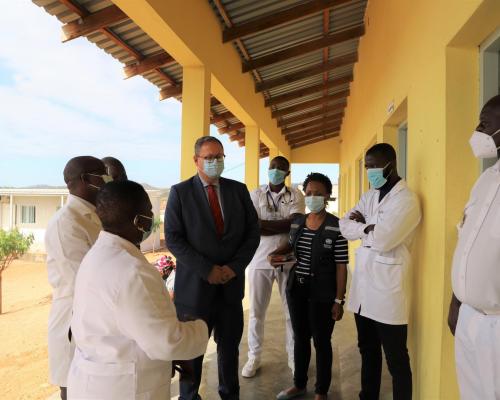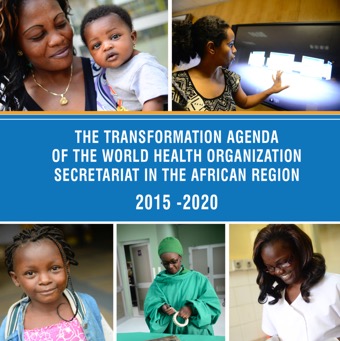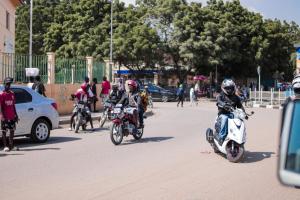Walking and cycling should not be a risk, but a right
By: Dr. Indrajit Hazarika, WHO Representative in Angola.
This week marks the 8th UN Global Road Safety Week, a time to reflect on a simple truth: the most basic and sustainable forms of transportation, walking and cycling, should never pose a threat to life. Yet every day, 3,200 people die on the world’s roads, almost one in four of whom are pedestrians or cyclists. That’s more than 310,000 lives lost every year - people who were simply trying to get from one place to another.
The situation worldwide is alarming. Only 0.2% of roads have dedicated cycle lanes, and 80% don’t meet basic pedestrian safety standards. In most countries, walking and cycling are not just neglected but dangerously neglected.
Less than a third of nations have policies that actively promote these modes of transport. This crisis is not confined to distant places. It’s also happening here in Angola. In 2024 alone, according to the National Police report, 12,303 road accidents were recorded, resulting in 3,120 deaths and more than 16,000 injuries. More than 4,200 of these incidents involved being run over. These are not just statistics: these are lives lost, families torn apart, and futures ruined.
Angola has taken a step in the right direction with the launch of its National Road Safety and Prevention Plan 2023-2027, which aims to reduce traffic injuries and deaths, improve driver training, and strengthen emergency response systems. However, despite the progress, significant challenges remain on the ground. In many cities, sidewalks are damaged or non-existent. Cycle lanes are practically non-existent. Many children walk long distances to school, crossing chaotic intersections without crosswalks and dodging cars and motorcycles. Unfortunately, many of these children face high risks on the way home, sometimes with fatal consequences.
This is not just an Angolan problem, but a regional one. Throughout Africa, walking and cycling are the dominant modes of transportation, especially among low-income communities. However, less than 30% of African countries have policies to support them. A recent report by the International Road Assessment Program (iRAP) revealed that only 21% of roads for pedestrians and 23% for cyclists meet minimum safety standards. We are precisely failing the people who depend most on these modes of transport. We need to do better. Walking and cycling should be the most common - and therefore safest - ways of getting around.
To make progress towards our traffic safety goals, it is essential to strengthen collective commitment and accelerate the necessary actions. This includes redesigning roads to put people at the center of mobility, implementing 30 km/h speed limits in areas of mixed use between pedestrians and cyclists, as well as strengthening legislation and its enforcement to combat risky behavior such as speeding, drunk driving, and distracted driving.
It is also essential to increase investment in safer vehicles, quality infrastructure, and more efficient emergency response systems. By 2030, almost 70% of the world’s population will live in cities. If we continue to favor private vehicles over people, our transport systems will collapse due to excessive demand. But if we invest in safe walking, cycling, and public transport, we can build healthier, more inclusive, and more sustainable cities. The benefits go far beyond safety. Walking and cycling reduce the risk of diseases such as cancer, diabetes, and heart disease. They also help combat climate change. They boost local economies, increase retail sales, increase property values, and create jobs.
They promote social connection and improve mental well-being. In many low- and middle-income countries, these are already the most common ways for people to get around. It’s time to make them safer, too. The shift to safe walking and cycling will contribute to achieving many of the Sustainable Development Goals - not just those related to health and cities, but also to reducing poverty, inequalities, and climate change. But we need commitment. And we need action to match the crisis. Let this week go beyond a campaign. Let it be a turning point. Let’s make sure that everyone in Angola and everywhere can walk and cycle without fear.



